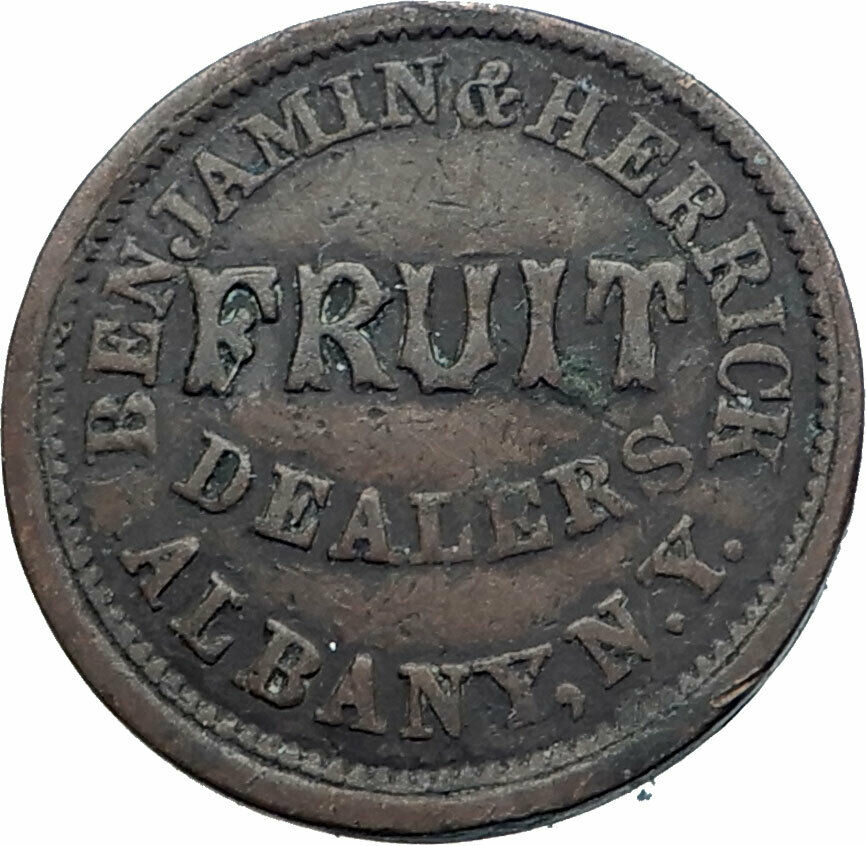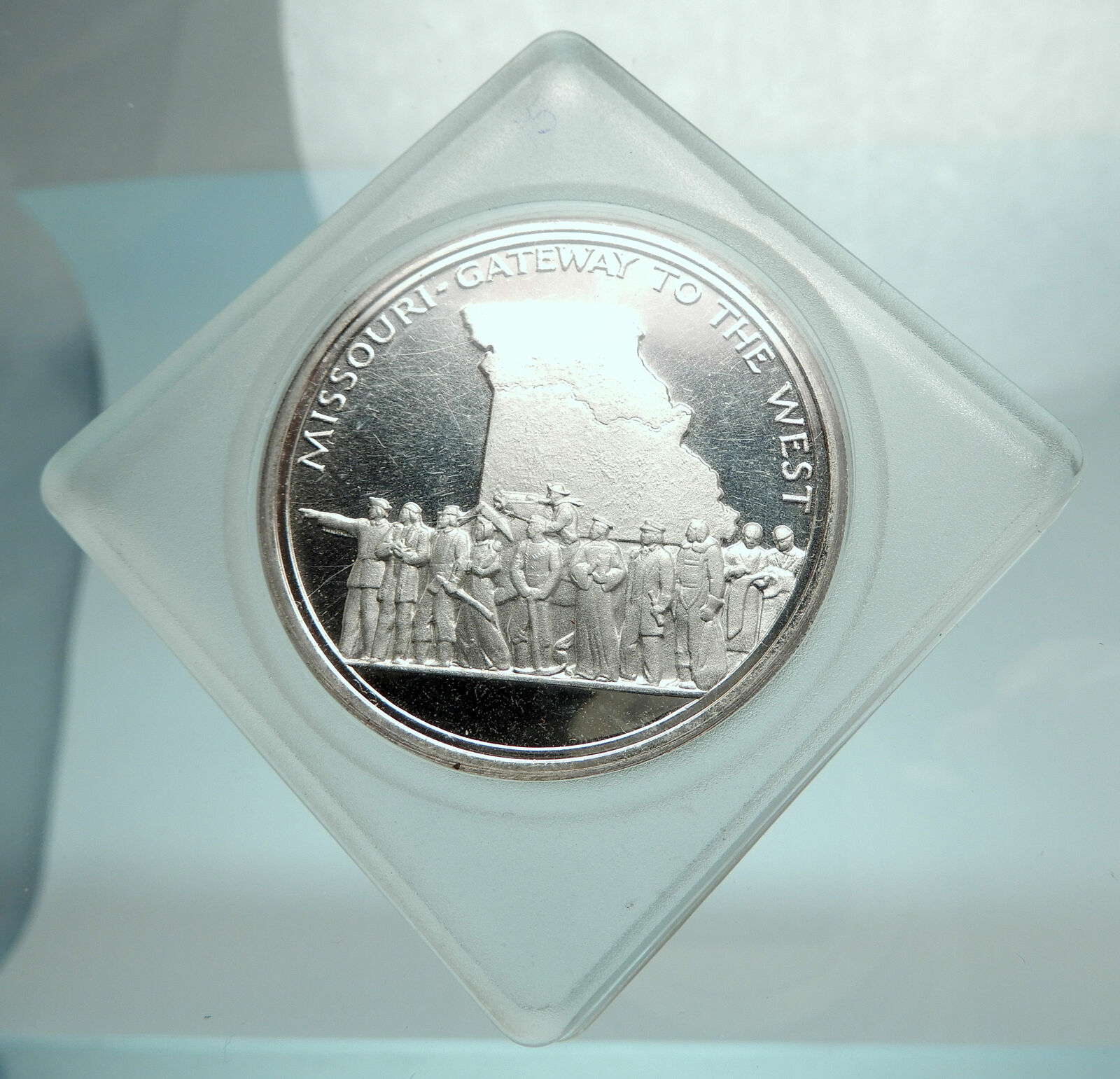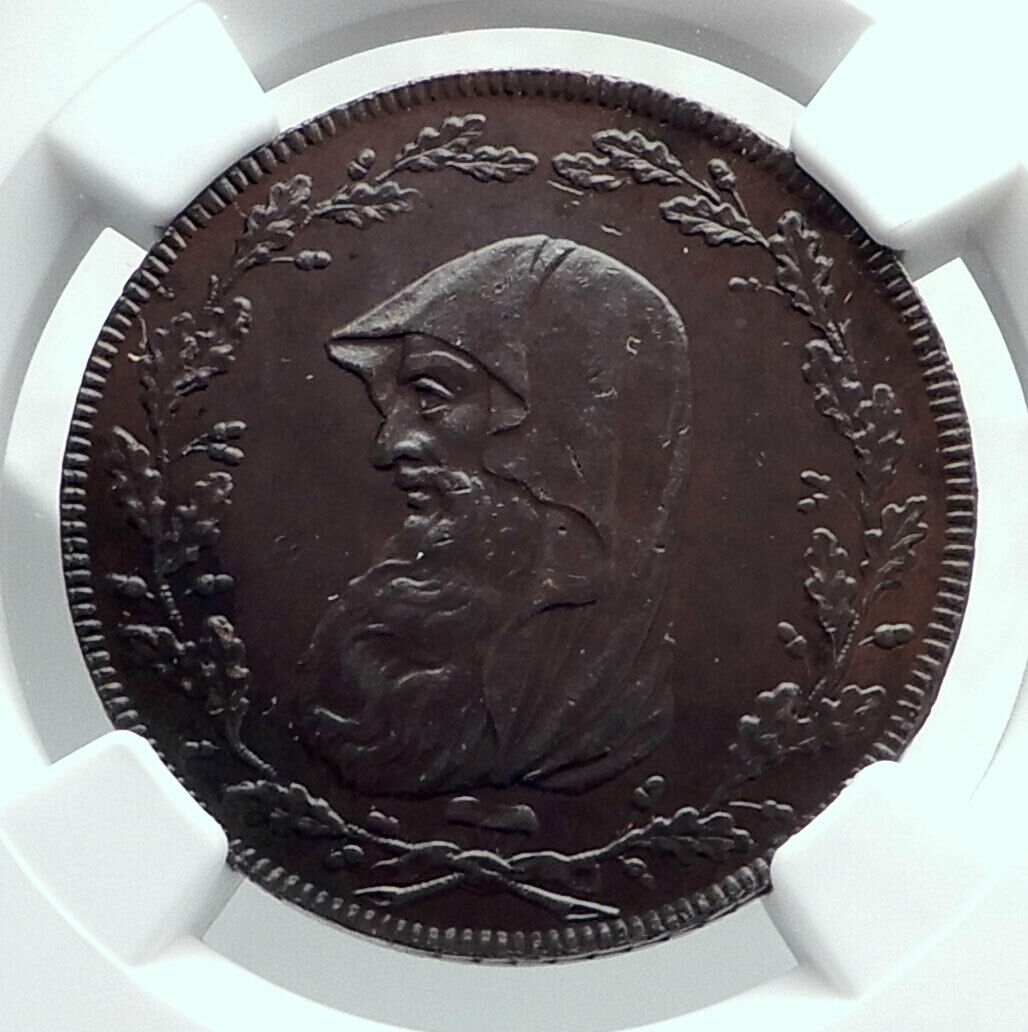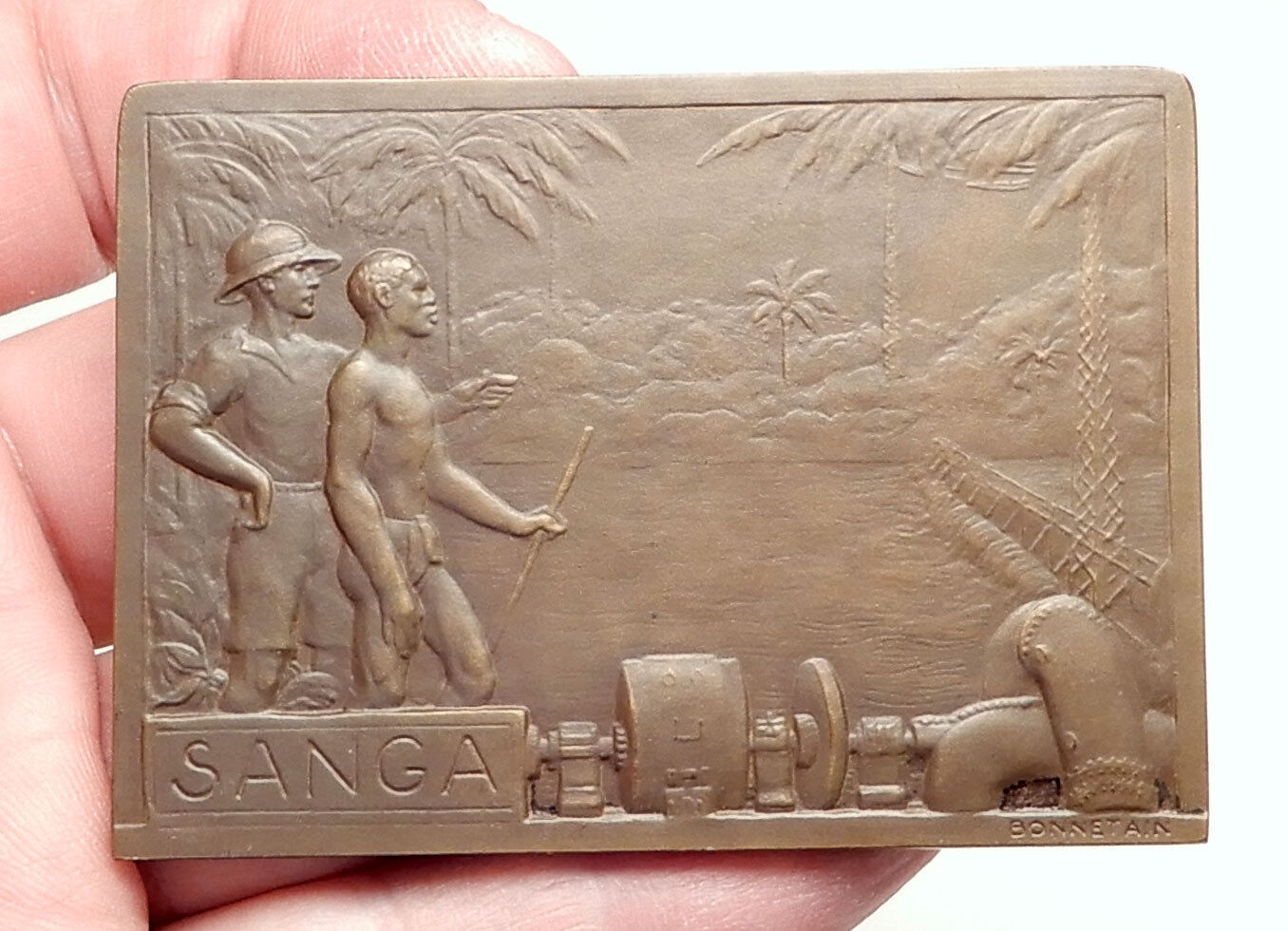|
Austria under Franz Joseph I – Emperor: 2 December 1848 – 21 November 1916
Military Merit Medal
1890 Bronze Medal 91mm x 31mm (Medallion) (23.06 grams)
FRANC.IOS.I.D.G.IMP.AVST.REX.BOH.ETC.ET.REX. APOST.HVNG *, Franz facing right, intricate crown atop.
SIGNVM LAVDIS, Wreath, intricate crown atop.
The
Military Merit Medal (German:
Militär-Verdienstmedaille, Hungarian: Katonai
Érdemérem, Croatian: Vojna medalja za zasluge)
was a military decoration of the Empire of
Austria-Hungary. It was founded by Emperor Franz
Joseph I on March 12, 1890. The Military Merit
Medal is often referred to as the “Signum Laudis”
(Latin for “sign of praise”) after the
inscription on the reverse of the medal.
The Military Merit Medal was only awarded to
officers and officials of similar rank. In the
Austro-Hungarian order of precedence, the
Military Merit Medal ranked below orders, such
as the Order of the Iron Crown, and the Military
Merit Cross. The Silver Military Merit Medal
(established in 1911) outranked the Bronze
Military Merit Medal. The one exception to the
order of precedence was the Grand Military Merit
Medal (Große Militär-Verdienstmedaille), a
golden medal given as a sign of special
recognition by the Emperor and usually awarded
to senior officers. It outranked the lower
grades of the Military Merit Cross and some
orders.
The Military Merit Medal was awarded in
peacetime for meritorious service and in wartime
for outstanding acts (including bravery or
military merit). The peacetime awards were on
the statute ribbon, a red ribbon, while wartime
awards were on the ribbon of the Bravery Medal,
a “laddered” pattern of red stripes edged in
white and with white between the “rungs”. This
latter was referred to as being either “on the
War Ribbon” (“am Kriegsband”) or “on the ribbon
of the Bravery Medal” (“am Bande der
Tapferkeitsmedaille”). Occasionally, the phrase
“on the ribbon of the Military Merit Cross” (“am
Bande des Militär-Verdienstkreuzes”) was used,
as the Military Merit Cross also used the ribbon
of the Bravery Medal.
Awards on the War Ribbon took precedence over
awards of the same class on the peacetime
ribbon.
The Military Merit Medal originally came in
one class, a gilt bronze version. Originally,
repeat awards were not authorized (except that
one could receive both the peacetime version and
the version on the War Ribbon). On March 26,
1911, a Silver Military Merit Medal was founded.
It was intended to reward those who would have
earned a second award of the Military Merit
Medal. It too could be awarded on either of the
two ribbons. Originally, it was intended that
the Silver Military Merit Medal would replace a
Bronze Military Merit Medal, but on April 7,
1914, wearing of both at the same time was
permitted.
On December 13, 1916, the addition of a pair
of gilt crossed swords on the ribbon was
authorized to recognize a higher grade of
wartime merit. In addition, reflecting the
increasing number of recommendations for repeat
awards as World War I progressed, on April 1,
1916, the Emperor authorized one or two 8-mm
wide silver clasps on the ribbon. Two such
clasps would indicate a third award of the
Silver Military Merit Medal. If swords were also
earned, these were mounted on the clasp.
Also founded on April 1, 1916 was the Grand
Military Merit Medal (Große
Militär-Verdienstmedaille), also called the
Grand Signum Laudis (Große Signum Laudis). This
was intended for the “highest especially
praiseworthy recognition” and was awarded only
30 times (with 4 repeat awards). 28 of its
recipients were officers of general’s rank; the
other two were the naval aviator Gottfried von
Banfield (1916) and the cryptologist Hermann
Pokorny (1918). The Grand Military Merit Medal
was of gilt bronze, and was 38-mm in diameter,
compared to 32-mm for the Silver Military Merit
Medal. The crown was surmounted by a wreath of
laurel leaves. The repeat awards were indicated
by a golden clasp on the ribbon, and all awards
were on the War Ribbon. While the Bronze and
Silver Military Merit Medals were essentially
reserved for Austro-Hungarians only, ten of the
30 Grand Military Merit Medals were awarded to
foreigners (9 German generals and 1 Ottoman
general, Enver Pasha).
A new series of Silver and Bronze Military
Merit Medals was created on April 18, 1917,
which featured the bust of Emperor Karl I, who
had acceded to the Austro-Hungarian throne after
the death of Franz Joseph I on November 21,
1916. The main difference, besides the bust of
the new Emperor in place of the old, was the
replacement of the single crown above the medal
by the paired crowns of Austria and Hungary on a
bed of laurel and oak leaves. Also, given
late-war conditions, the new medals were cruder
in quality than their predecessors. A new Grand
Military Merit Medal was added on April 28,
1917.
You are bidding on the exact item pictured, provided with a Certificate of Authenticity and Lifetime Guarantee of Authenticity.
 Franz Joseph I or Francis Joseph I (Franz Joseph Karl; 18 August 1830 – 21 November 1916) was Emperor of Austria, King of Hungary, and monarch of other states in the Austro-Hungarian Empire, from 2 December 1848 to his death. From 1 May 1850 to 24 August 1866 he was also President of the German Confederation. He was the longest-reigning Emperor of Austria and King of Hungary, as well as the third-longest-reigning monarch of any country in European history, after Louis XIV of France and Johann II of Liechtenstein. Franz Joseph I or Francis Joseph I (Franz Joseph Karl; 18 August 1830 – 21 November 1916) was Emperor of Austria, King of Hungary, and monarch of other states in the Austro-Hungarian Empire, from 2 December 1848 to his death. From 1 May 1850 to 24 August 1866 he was also President of the German Confederation. He was the longest-reigning Emperor of Austria and King of Hungary, as well as the third-longest-reigning monarch of any country in European history, after Louis XIV of France and Johann II of Liechtenstein.
In December 1848, Emperor Ferdinand abdicated the throne at Olomouc, as part of Minister-president Felix zu Schwarzenberg’s plan to end the Revolutions of 1848 in Hungary. This allowed Ferdinand’s nephew Franz Joseph to accede to the throne. Largely considered to be a reactionary, Franz Joseph spent his early reign resisting constitutionalism in his domains. The Austrian Empire was forced to cede its influence over Tuscany and most of its claim to Lombardy-Venetia to the Kingdom of Piedmont-Sardinia, following the Second Italian War of Independence in 1859 and the Third Italian War of Independence in 1866. Although Franz Joseph ceded no territory to the Kingdom of Prussia after the Austrian defeat in the Austro-Prussian War, the Peace of Prague (23 August 1866) settled the German question in favour of Prussia, which prevented the Unification of Germany from occurring under the House of Habsburg.
Franz Joseph was troubled by nationalism during his entire reign. He concluded the Austro-Hungarian Compromise of 1867, which granted greater autonomy to Hungary and transformed the Austrian Empire into the Austro-Hungarian Empire, under his dual monarchy. His domains were then ruled peacefully for the next 45 years, but Franz Joseph personally suffered the tragedies of the execution of his brother Emperor Maximilian of Mexico in 1867, the suicide of his only son and heir, Crown Prince Rudolf, in 1889, and the assassination of his wife, Empress Elisabeth, in 1898.
After the Austro-Prussian War, Austria-Hungary turned its attention to the Balkans, which was a hotspot of international tension because of conflicting interests with the Russian Empire. The Bosnian Crisis was a result of Franz Joseph’s annexation of Bosnia and Herzegovina in 1908, which had been occupied by his troops since the Congress of Berlin (1878).
On 28 June 1914, the assassination of his nephew, Archduke Franz Ferdinand, in Sarajevo resulted in Austria-Hungary’s declaration of war against the Kingdom of Serbia, which was Russia’s ally. That activated a system of alliances which resulted in World War I.
Franz Joseph died on 21 November 1916, after ruling his domains for almost 68 years. He was succeeded by his grandnephew Charles.
  Austria, officially the Republic of Austria (German: Republik Österreich), is a federal republic and a landlocked country of over 8.5 million people in Central Europe. It is bordered by the Czech Republic and Germany to the north, Hungary and Slovakia to the east, Slovenia and Italy to the south, and Switzerland and Liechtenstein to the west. The territory of Austria covers 83,879 square kilometres (32,386 sq mi). Austria’s terrain is highly mountainous, lying within the Alps; only 32% of the country is below 500 metres (1,640 ft), and its highest point is 3,798 metres (12,461 ft). The majority of the population speak local Bavarian dialects of German as their native language, and Austrian German in its standard form is the country’s official language. Other local official languages are Hungarian, Burgenland Croatian, and Slovene. Austria, officially the Republic of Austria (German: Republik Österreich), is a federal republic and a landlocked country of over 8.5 million people in Central Europe. It is bordered by the Czech Republic and Germany to the north, Hungary and Slovakia to the east, Slovenia and Italy to the south, and Switzerland and Liechtenstein to the west. The territory of Austria covers 83,879 square kilometres (32,386 sq mi). Austria’s terrain is highly mountainous, lying within the Alps; only 32% of the country is below 500 metres (1,640 ft), and its highest point is 3,798 metres (12,461 ft). The majority of the population speak local Bavarian dialects of German as their native language, and Austrian German in its standard form is the country’s official language. Other local official languages are Hungarian, Burgenland Croatian, and Slovene.
 The origins of modern-day Austria date back to the time of the Habsburg dynasty when the vast majority of the country was a part of the Holy Roman Empire. From the time of the Reformation, many Northern German princes, resenting the authority of the Emperor, used Protestantism as a flag of rebellion. The Thirty Years War, the influence of the Kingdom of Sweden and Kingdom of France, the rise of the Kingdom of Prussia, and the Napoleonic invasions all weakened the power of the Emperor in the North of Germany, but in the South, and in non-German areas of the Empire, the Emperor and Catholicism maintained control. During the 17th and 18th centuries, Austria was able to retain its position as one of the great powers of Europe and, in response to the coronation of Napoleon as the Emperor of the French, the Austrian Empire was officially proclaimed in 1804. Following Napoleon’s defeat, Prussia emerged as Austria’s chief competitor for rule of a larger Germany. Austria’s defeat by Prussia at the Battle of Königgrätz, during the Austro-Prussian War of 1866 cleared the way for Prussia to assert control over the rest of Germany. In 1867, the empire was reformed into Austria-Hungary. After the defeat of France in the 1870 Franco-Prussian War, Austria was left out of the formation of a new German Empire, although in the following decades its politics, and its foreign policy, increasingly converged with those of the Prussian-led Empire. During the 1914 July Crisis that followed the assassination of Archduke Franz Ferdinand of Austria, Germany guided Austria in issuing the ultimatum to Serbia that led to the declaration of World War I. The origins of modern-day Austria date back to the time of the Habsburg dynasty when the vast majority of the country was a part of the Holy Roman Empire. From the time of the Reformation, many Northern German princes, resenting the authority of the Emperor, used Protestantism as a flag of rebellion. The Thirty Years War, the influence of the Kingdom of Sweden and Kingdom of France, the rise of the Kingdom of Prussia, and the Napoleonic invasions all weakened the power of the Emperor in the North of Germany, but in the South, and in non-German areas of the Empire, the Emperor and Catholicism maintained control. During the 17th and 18th centuries, Austria was able to retain its position as one of the great powers of Europe and, in response to the coronation of Napoleon as the Emperor of the French, the Austrian Empire was officially proclaimed in 1804. Following Napoleon’s defeat, Prussia emerged as Austria’s chief competitor for rule of a larger Germany. Austria’s defeat by Prussia at the Battle of Königgrätz, during the Austro-Prussian War of 1866 cleared the way for Prussia to assert control over the rest of Germany. In 1867, the empire was reformed into Austria-Hungary. After the defeat of France in the 1870 Franco-Prussian War, Austria was left out of the formation of a new German Empire, although in the following decades its politics, and its foreign policy, increasingly converged with those of the Prussian-led Empire. During the 1914 July Crisis that followed the assassination of Archduke Franz Ferdinand of Austria, Germany guided Austria in issuing the ultimatum to Serbia that led to the declaration of World War I.
After the collapse of the Habsburg (Austro-Hungarian) Empire in 1918 at the end of World War I, Austria adopted and used the name the Republic of German-Austria (Deutschösterreich, later Österreich) in an attempt for union with Germany, but was forbidden due to the Treaty of Saint-Germain-en-Laye (1919). The First Austrian Republic was established in 1919. In the 1938 Anschluss, Austria was occupied and annexed by Nazi Germany. This lasted until the end of World War II in 1945, after which Germany was occupied by the Allies and Austria’s former democratic constitution was restored. In 1955, the Austrian State Treaty re-established Austria as a sovereign state, ending the occupation. In the same year, the Austrian Parliament created the Declaration of Neutrality which declared that the Second Austrian Republic would become permanently neutral.
Today, Austria is a parliamentary representative democracy comprising nine federal states. The capital and largest city, with a population exceeding 1.7 million, is Vienna. Austria is one of the richest countries in the world, with a nominal per capita GDP of $52,216 (2014 est.). The country has developed a high standard of living and in 2014 was ranked 21st in the world for its Human Development Index. Austria has been a member of the United Nations since 1955, joined the European Union in 1995, and is a founder of the OECD. Austria also signed the Schengen Agreement in 1995, and adopted the euro in 1999.
|




 Franz Joseph I or Francis Joseph I (Franz Joseph Karl; 18 August 1830 – 21 November 1916) was Emperor of Austria, King of Hungary, and monarch of other states in the Austro-Hungarian Empire, from 2 December 1848 to his death. From 1 May 1850 to 24 August 1866 he was also President of the German Confederation. He was the longest-reigning Emperor of Austria and King of Hungary, as well as the third-longest-reigning monarch of any country in European history, after Louis XIV of France and Johann II of Liechtenstein.
Franz Joseph I or Francis Joseph I (Franz Joseph Karl; 18 August 1830 – 21 November 1916) was Emperor of Austria, King of Hungary, and monarch of other states in the Austro-Hungarian Empire, from 2 December 1848 to his death. From 1 May 1850 to 24 August 1866 he was also President of the German Confederation. He was the longest-reigning Emperor of Austria and King of Hungary, as well as the third-longest-reigning monarch of any country in European history, after Louis XIV of France and Johann II of Liechtenstein.
 Austria, officially the Republic of Austria (German: Republik Österreich), is a federal republic and a landlocked country of over 8.5 million people in Central Europe. It is bordered by the Czech Republic and Germany to the north, Hungary and Slovakia to the east, Slovenia and Italy to the south, and Switzerland and Liechtenstein to the west. The territory of Austria covers 83,879 square kilometres (32,386 sq mi). Austria’s terrain is highly mountainous, lying within the Alps; only 32% of the country is below 500 metres (1,640 ft), and its highest point is 3,798 metres (12,461 ft). The majority of the population speak local Bavarian dialects of German as their native language, and Austrian German in its standard form is the country’s official language. Other local official languages are Hungarian, Burgenland Croatian, and Slovene.
Austria, officially the Republic of Austria (German: Republik Österreich), is a federal republic and a landlocked country of over 8.5 million people in Central Europe. It is bordered by the Czech Republic and Germany to the north, Hungary and Slovakia to the east, Slovenia and Italy to the south, and Switzerland and Liechtenstein to the west. The territory of Austria covers 83,879 square kilometres (32,386 sq mi). Austria’s terrain is highly mountainous, lying within the Alps; only 32% of the country is below 500 metres (1,640 ft), and its highest point is 3,798 metres (12,461 ft). The majority of the population speak local Bavarian dialects of German as their native language, and Austrian German in its standard form is the country’s official language. Other local official languages are Hungarian, Burgenland Croatian, and Slovene. The origins of modern-day Austria date back to the time of the Habsburg dynasty when the vast majority of the country was a part of the Holy Roman Empire. From the time of the Reformation, many Northern German princes, resenting the authority of the Emperor, used Protestantism as a flag of rebellion. The Thirty Years War, the influence of the Kingdom of Sweden and Kingdom of France, the rise of the Kingdom of Prussia, and the Napoleonic invasions all weakened the power of the Emperor in the North of Germany, but in the South, and in non-German areas of the Empire, the Emperor and Catholicism maintained control. During the 17th and 18th centuries, Austria was able to retain its position as one of the great powers of Europe and, in response to the coronation of Napoleon as the Emperor of the French, the Austrian Empire was officially proclaimed in 1804. Following Napoleon’s defeat, Prussia emerged as Austria’s chief competitor for rule of a larger Germany. Austria’s defeat by Prussia at the Battle of Königgrätz, during the Austro-Prussian War of 1866 cleared the way for Prussia to assert control over the rest of Germany. In 1867, the empire was reformed into Austria-Hungary. After the defeat of France in the 1870 Franco-Prussian War, Austria was left out of the formation of a new German Empire, although in the following decades its politics, and its foreign policy, increasingly converged with those of the Prussian-led Empire. During the 1914 July Crisis that followed the assassination of Archduke Franz Ferdinand of Austria, Germany guided Austria in issuing the ultimatum to Serbia that led to the declaration of World War I.
The origins of modern-day Austria date back to the time of the Habsburg dynasty when the vast majority of the country was a part of the Holy Roman Empire. From the time of the Reformation, many Northern German princes, resenting the authority of the Emperor, used Protestantism as a flag of rebellion. The Thirty Years War, the influence of the Kingdom of Sweden and Kingdom of France, the rise of the Kingdom of Prussia, and the Napoleonic invasions all weakened the power of the Emperor in the North of Germany, but in the South, and in non-German areas of the Empire, the Emperor and Catholicism maintained control. During the 17th and 18th centuries, Austria was able to retain its position as one of the great powers of Europe and, in response to the coronation of Napoleon as the Emperor of the French, the Austrian Empire was officially proclaimed in 1804. Following Napoleon’s defeat, Prussia emerged as Austria’s chief competitor for rule of a larger Germany. Austria’s defeat by Prussia at the Battle of Königgrätz, during the Austro-Prussian War of 1866 cleared the way for Prussia to assert control over the rest of Germany. In 1867, the empire was reformed into Austria-Hungary. After the defeat of France in the 1870 Franco-Prussian War, Austria was left out of the formation of a new German Empire, although in the following decades its politics, and its foreign policy, increasingly converged with those of the Prussian-led Empire. During the 1914 July Crisis that followed the assassination of Archduke Franz Ferdinand of Austria, Germany guided Austria in issuing the ultimatum to Serbia that led to the declaration of World War I.




